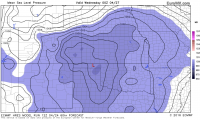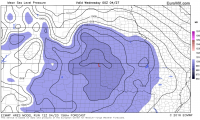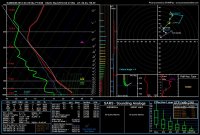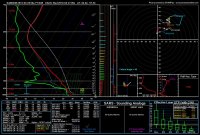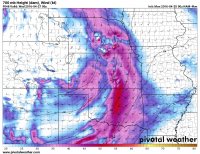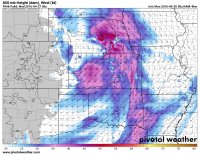Trey Thee
EF2
VBV is the biggest fly in the ointment as I see it. It seems moisture return will be adequate but the wind profiles are going to be somewhat limiting. As mentioned above storm relative helicity, while adequate for tornadoes is hardly indicative of widespread major outbreak at this point. The system is now fully onshore, model samples should start reflecting this with the 12Z runs I would suspect.
Another potential issue...the 00Z Euro has the low weakening throughout the day and retrograding back into NM. Going from 992mb at 0Z on the 26th, to 995 at 00Z on the 27th.
On the upside? It seems overnight some of the displacement between upper air and surface features has become somewhat more aligned...VBV is still bothersome in OK.
Another potential issue...the 00Z Euro has the low weakening throughout the day and retrograding back into NM. Going from 992mb at 0Z on the 26th, to 995 at 00Z on the 27th.
On the upside? It seems overnight some of the displacement between upper air and surface features has become somewhat more aligned...VBV is still bothersome in OK.

